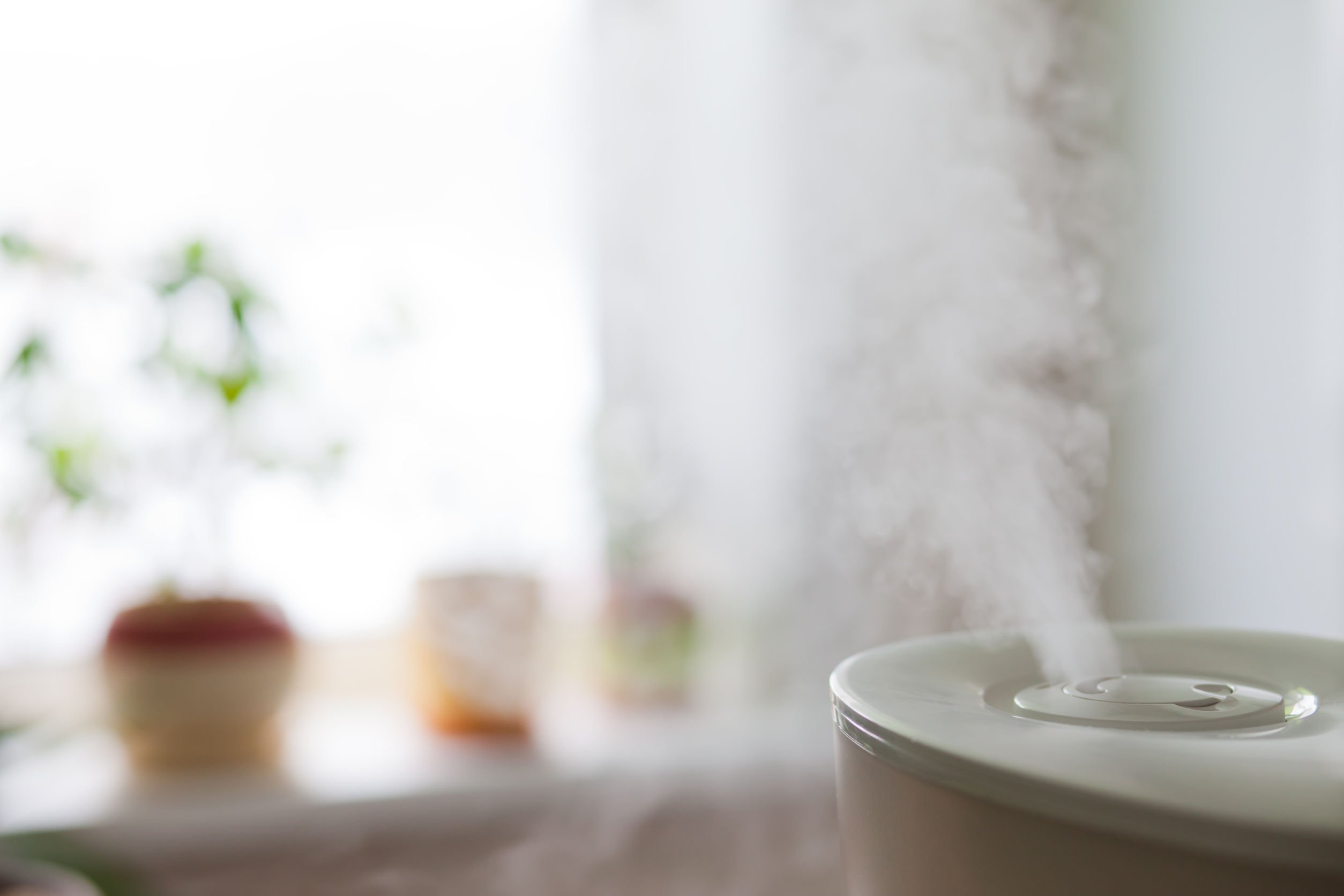It’s the time of year for skin, dry eyes and irritated sinuses. Humidified air can offer relief but can quickly become a health hazard when not used properly.
There are a few common ways to humidify the air including central humidifiers connected to the whole house heating system, ultrasonic cool mist humidifiers, evaporated humidity via a fan and wick system and steam vaporization.
The use of at home humidification systems can offer a lot of relief in dry winter months, however, can become dangerous when not properly cared for. Following a few precautionary steps can be the difference between preventing or perpetuating respiratory conditions.
A humidity level between 40-60% has been shown to reduce the rates of respiratory infections at home, school and workplace. 1 High humidity environments prove to increase risks of respiratory illness including pneumonia. Dust mite and fungal spore counts elevate in a higher moisture environment, typically at relative humidity levels above 60%. Humidity levels lower than 40% increase symptoms of dryness but also allow bacteria and virus to easily travel through the air. Maintaining humidity levels, not exceeding 60%, requires the use of a humidifier in dry winter months. Evaporative or heated humidity mechanisms are the ideal modalities to increase the moisture content, as they are less likely to disseminate aerosolized contaminants. 2
How to keep your humidifier safe
Change humidifier water often
Start by using distilled water, as regular tap water will cause mineral build up on the machine not only making it less effective but allows these contaminates to get disseminated into the air.
Clean at least weekly
Hydrogen peroxide or white vinegar are helpful to reduce bacteria development in your machine. Clean the humidifier tank and basin with your solution of choice and rinse thoroughly. If your unit has a filter change as often as recommended.
Replace old units
At some point, it will be difficult to keep deposits from forming on the unit and it will be time to think about replacing it. Mineral build up promotes bacterial growth.
-Consider a humidistat to monitor humidity in your home to ensure proper air moisture as too much can become a health hazard. Monitoring levels of humidity are also important for those who suffer allergies or asthma as these conditions are exacerbated when air moisture content is high.
 Dr. Ashley Burkman received her Doctor of Naturopathic Medicine degree from the National University of Health Sciences in Chicago. She is deeply rooted in classical naturopathic medicine, practicing the belief that the human body has an innate ability to heal itself. She works with patients toward lifestyle adjustments in order to bring about long-term health. Viewing the body as an integrated whole and addressing all aspects of what determines health is the cornerstone of both naturopathic medicine and Dr. Burkman’s practice.
Dr. Ashley Burkman received her Doctor of Naturopathic Medicine degree from the National University of Health Sciences in Chicago. She is deeply rooted in classical naturopathic medicine, practicing the belief that the human body has an innate ability to heal itself. She works with patients toward lifestyle adjustments in order to bring about long-term health. Viewing the body as an integrated whole and addressing all aspects of what determines health is the cornerstone of both naturopathic medicine and Dr. Burkman’s practice.
Dr. Burkman is a licensed naturopathic physician at the Connecticut Natural Health Specialists in Manchester, Connecticut. Commitment to the growth of her profession has led her to be appointed to the Board of Trustees of her Alma Mater. Additionally, she is a board member of the Endocrinology Association of Naturopathic Physicians and a member of the Connecticut Naturopathic Association. In addition to private practice, Dr. Burkman is an adjunct faculty member of the University of New England School of Osteopathic Medicine, which allows her to teach family practice osteopathic residents about functional and nutritional medicine. Aside from teaching and private practice she contributes monthly articles to Thenatpath.com, an online website that disseminates natural health information.
Dr. Burkman, an Iowa native enjoys spending time with friends and family and searching for new hiking trails to conquer. She attends comedy shows regularly, catches every Iowa Hawkeye football game she can and has a soft spot for cats. While Dr. Burkman enjoys finding a natural approach to any condition a patient may be experiencing, she is particularly interested in natural therapies for endocrine disorders, autoimmune conditions, and digestive disorders.
References
- Arundel, AV, Sterling, EM, Biggin, JH, Sterling, TD. Indirect health effects of relative humidity in indoor environments. Environ Health Perspect Environmental Health Perspectives. 1986;65:351–361. doi:10.1289/ehp.8665351.
- Tyndall, RL, Lehman, ES, Bowman, EK, Milton, DK, Barbaree, JM. Home Humidifiers as a Potential Source of Exposure to Microbial Pathogens, Endotoxins, and Allergens. Indoor Air. 1995;5(3):171–178. doi:10.1111/j.1600-0668.1995.t01-1-00003.x.




